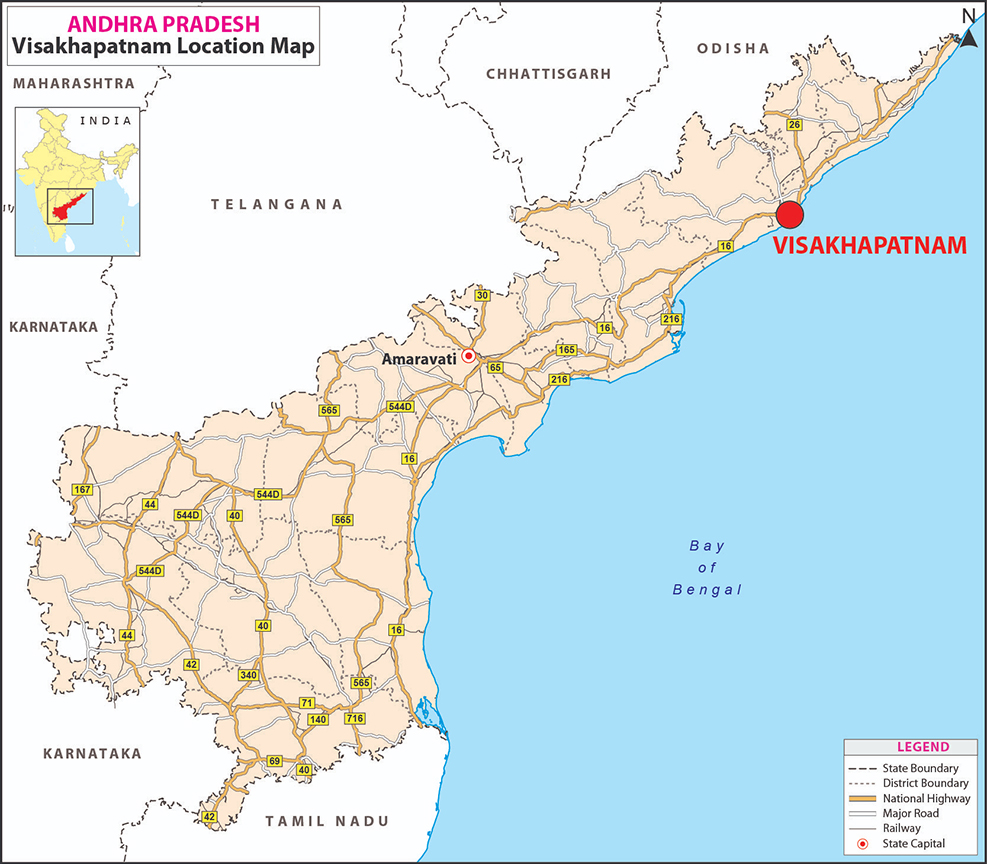First Green Hydrogen Microgrid Project: Andhra Pradesh | 16 Dec 2021
For Prelims: Green Hydrogen Microgrid Project, Decarbonizing,Forms of Hydrogen, NTPC
For Mains: Green Hydrogen and its significance in achieving India’s target of becoming carbon neutral by 2070
Why in News
Recently, National Thermal Power Corporation Ltd has awarded the country’s first green hydrogen microgrid project at its Simhadri (near Visakhapatnam) plant in Andhra Pradesh.
Key Points
- About:
- This unique project configuration is designed in-house by NTPC. It would be a precursor to large-scale hydrogen energy storage projects. It is in line with India’s vision to become carbon neutral by 2070.
- The hydrogen would be produced using the advanced 240 kW Solid Oxide Electrolyser by taking input power from the nearby Floating Solar project.
- Earlier, NTPC had commissioned the development of India’s biggest floating solar plant in Telangana’s Ramagundam.
- The hydrogen produced during the day will then be stored at high pressure and would be electrified using a 50 kW Solid Oxide Fuel Cell.
- A solid oxide fuel cell (or SOFC) is an electrochemical conversion device that produces electricity directly from oxidizing a fuel.
- Significance:
- Helpful in Deploying Multiple Microgrids:
- The project will be useful for further studying and deploying multiple microgrids in various off-grid and strategic locations of the country.
- Clean energy development is an important weapon against climate change and limiting its devastating effects.
- The project will be useful for further studying and deploying multiple microgrids in various off-grid and strategic locations of the country.
- Open Prospects for Decarbonizing:
- It will open prospects for decarbonizing the far-off regions of the country such as Ladakh, J&K, etc., which are dependent on diesel generators.
- Decarbonizing means removing or reducing the amount of gaseous carbon compounds released in the environment.
- NTPC Renewable Energy Limited (NTPC REL) has also inked a pact with the Union territory of Ladakh for a green hydrogen mobility project.
- It will open prospects for decarbonizing the far-off regions of the country such as Ladakh, J&K, etc., which are dependent on diesel generators.
- Energy Security:
- Hydrogen fuel can be a game-changer for the energy security of India, which imports 85% of its oil and 53% of gas requirements.
- To promote clean fuels, India is considering making it mandatory for fertilizer plants and oil refineries to purchase green hydrogen.
- NTPC is also looking to leverage hydrogen for transportation by mixing the fuel with natural gas for the City Gas Distribution (CGD) network.
- Helpful in Deploying Multiple Microgrids:
- Related Initiatives:
- The country’s first experiment of a hydrogen-fuel cell technology-based train by retrofitting an existing diesel engine has been announced by Indian Railways.
- National Hydrogen Energy Mission (NHM):
- The Union Budget (2021-22) has announced the mission for using hydrogen as an energy source.
- Intended Nationally Determined Contributions (INDCs) target: It targets installing 100 GW grid-connected solar power plants by the year 2022.
- National Action Plan on Climate Change
- International Solar Alliance (ISA)
Green Hydrogen
- It is produced by splitting water into hydrogen and oxygen using an electrolyzer powered by renewable energy sources such as wind and solar.
- The fuel can be a game-changer for the energy security of India, which imports 85% of its oil and 53% of gas requirements.
- To promote clean fuels, India is considering making it mandatory for fertilizer plants and oil refineries to purchase green hydrogen.
Other Forms of Hydrogen
- Brown hydrogen:
- It is produced using coal where the emissions are released to the air.
- Grey hydrogen:
- It is produced from natural gas where the associated emissions are released to the air.
- Blue hydrogen:
- It is produced from natural gas, where the emissions are captured using carbon capture and storage.
National Thermal Power Corporation Limited
- NTPC Ltd. is a central Public Sector Undertaking (PSU) under the Ministry of Power.
- It is India’s largest energy conglomerate with roots planted way back in 1975 to accelerate power development in India.
- It aims to provide reliable power and related solutions in an economical, efficient and environment-friendly manner, driven by innovation and agility.
- It has a 67,907-MW installed capacity comprising 47 NTPC stations and 26 joint and 26 joint venture stations.
- It has been pushing towards green energy and green hydrogen projects to reduce carbon footprints. It has recently revised its target of achieving 60GW renewables capacity by 2032.
- It became a Maharatna company in May 2010.
- It is located in New Delhi.

